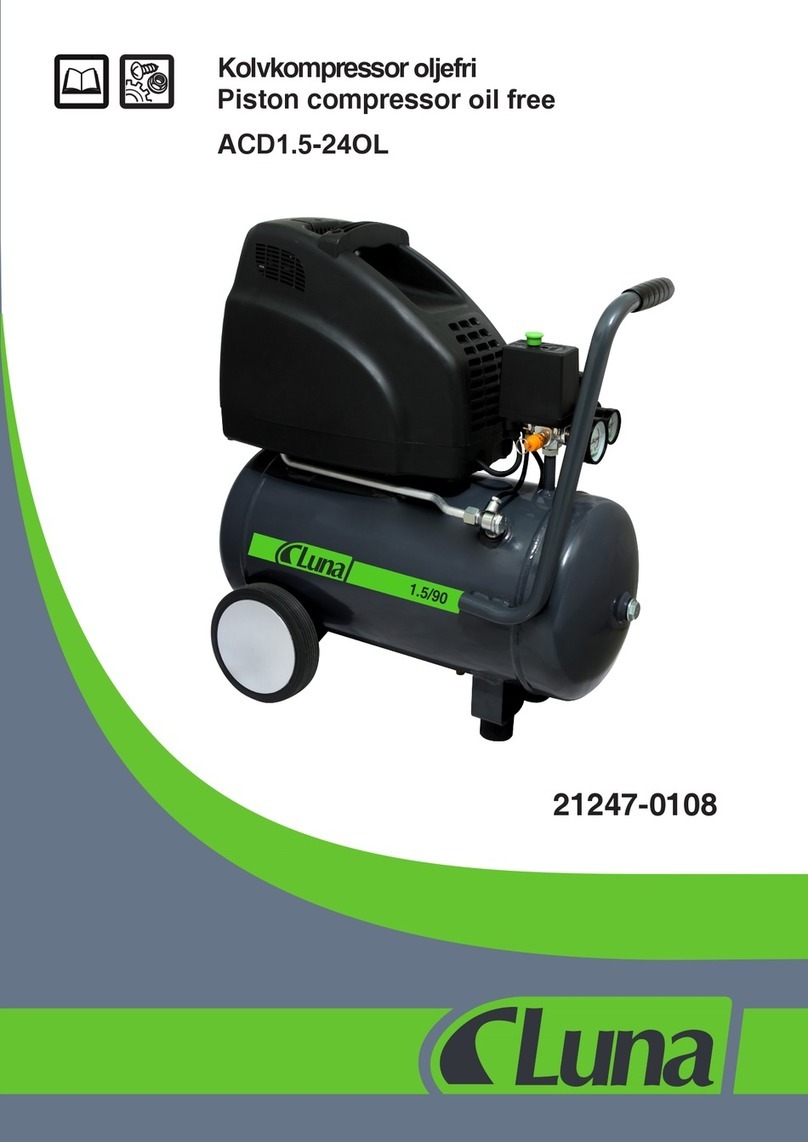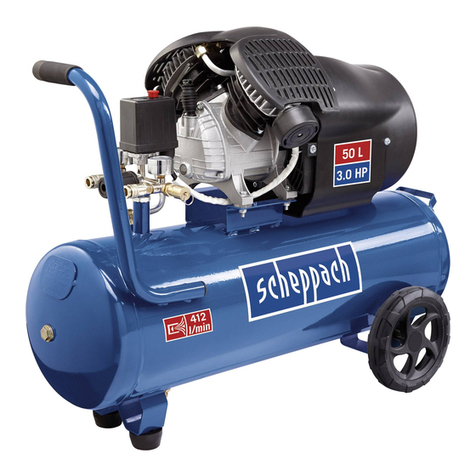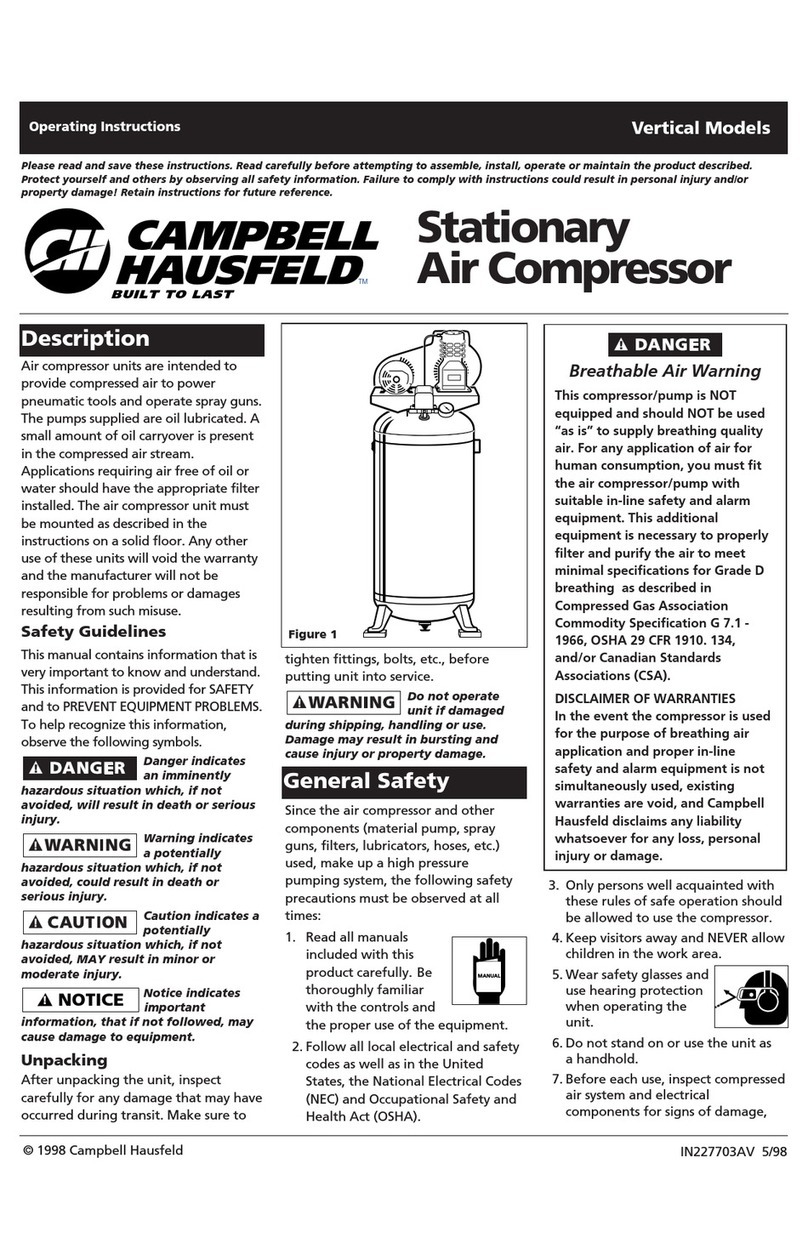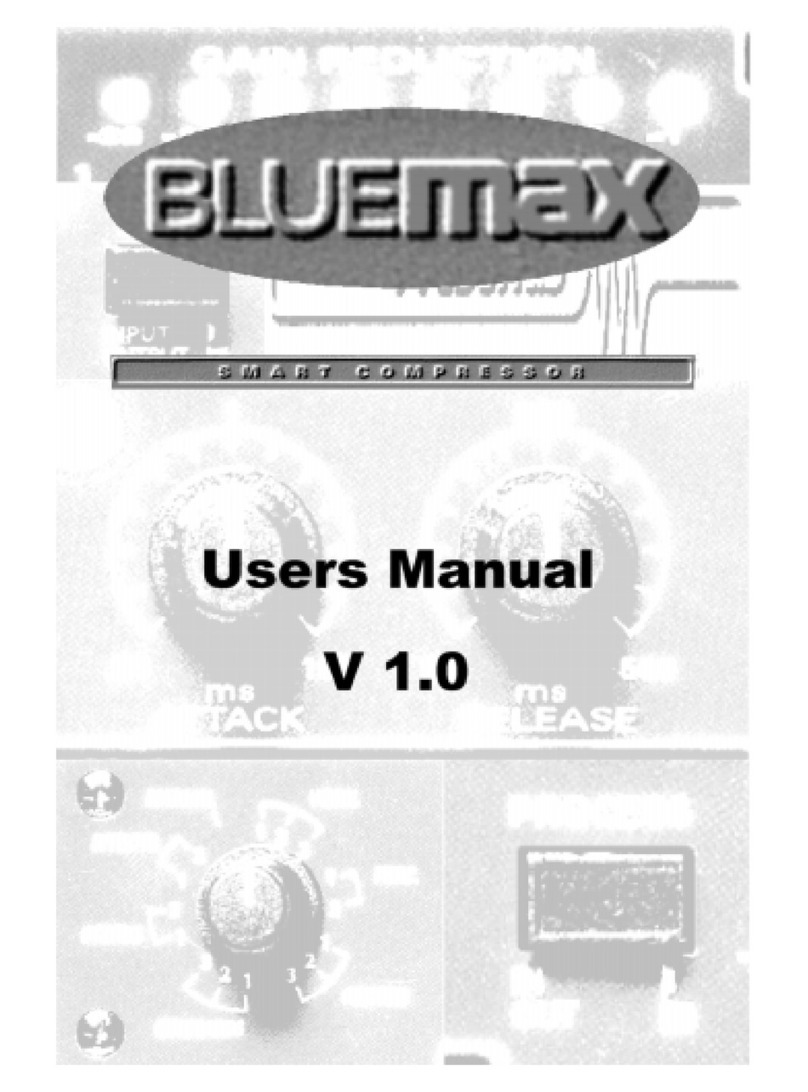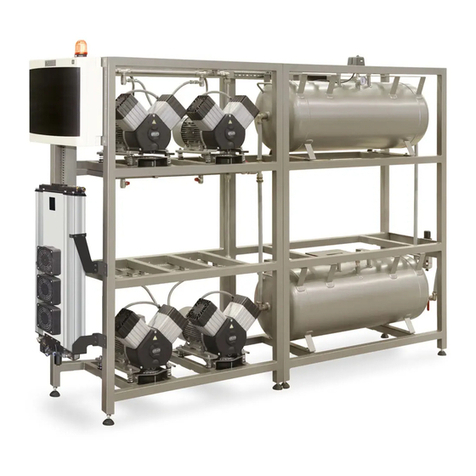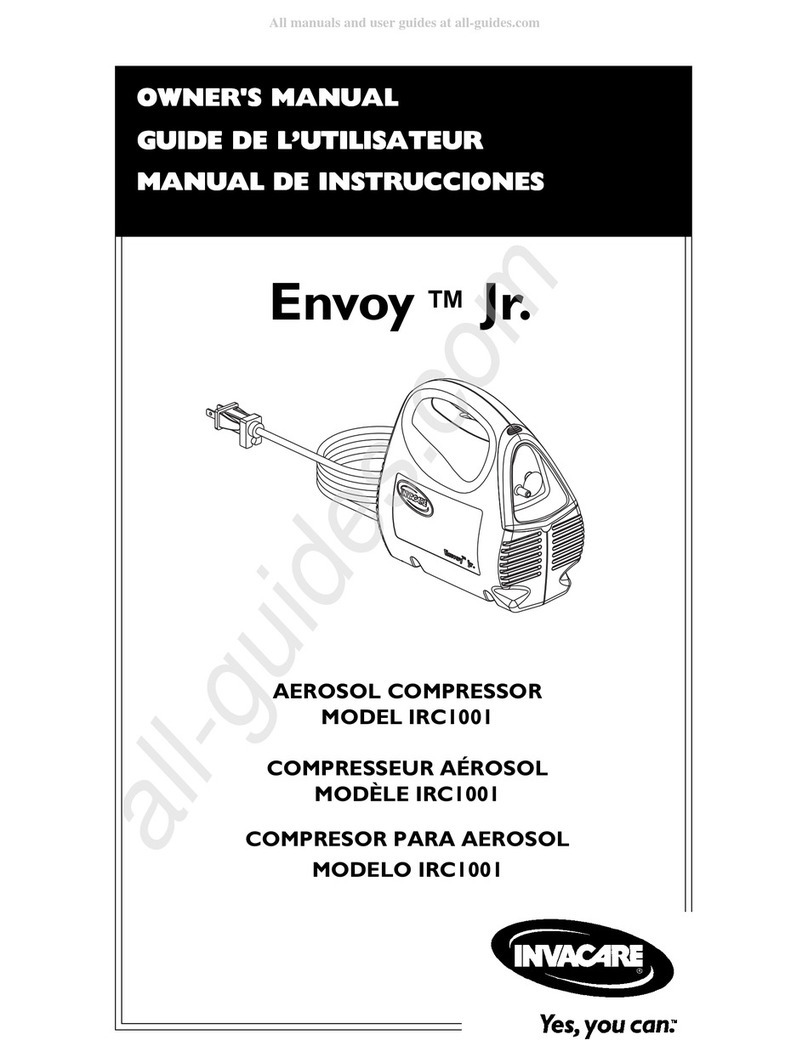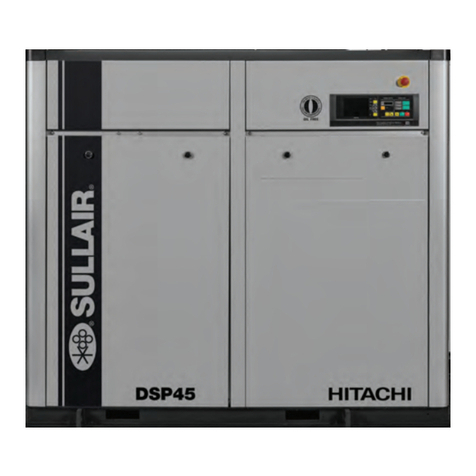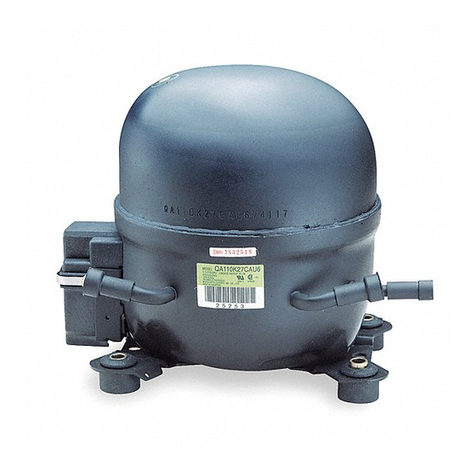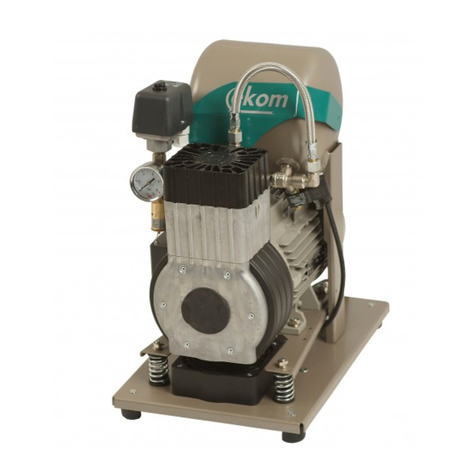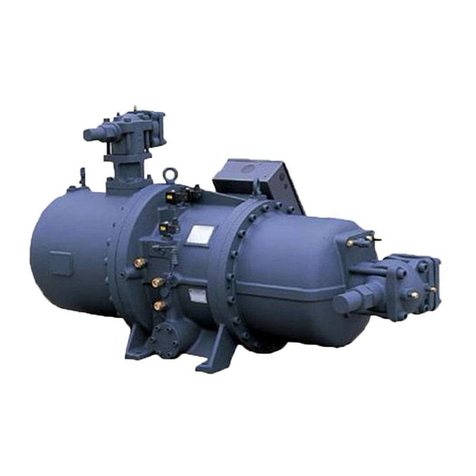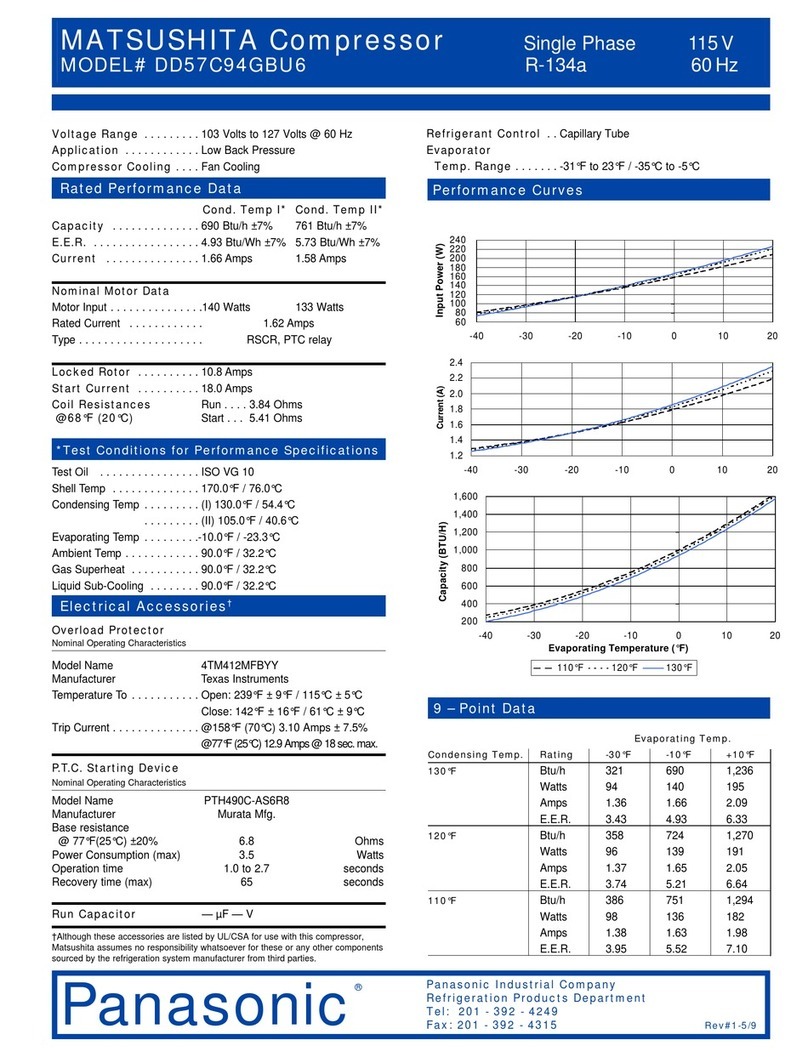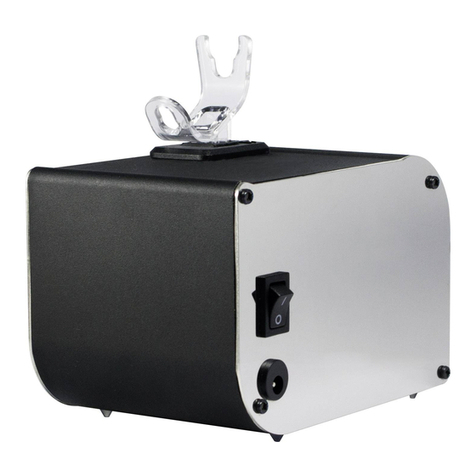
ENGLISH
7
Instructions for use
1. Check theoil level in thewindow (5).
2. Attach theappropriate air tool for thework you wish to undertake: blow gun, spray gun, tyre
inflator, etc.
3. Read theinstruction manual of theconnected air tool and if necessary, set therecommended
working pressure using thepressure regulator (10).
4. When you have finished work and thecompressor has been turned off, thepressure must be
released by pulling out thesafety valve (12).
Use anoil suitable for air compressors such as SAE 30, ISO 68 or equivalent.
Care and maintenance
• Repairs must only be carried out by qualified service technicians and only using original spare parts.
• An initial replacement of theoil in theair compressor should be carried out after 10 hours of
operation.
• Change theoil and clean theair filter after every 120 hours ofuse. Checkthesafety valve and
pressure gauges at thesametime.
• Test thesafety valve by unscrewing theuppermost nut until it is loose and then pulling it out
until thespring-loaded valveopens. Ifthesafety valve is working properly (and theair tank
is under pressure) air should seep out through thesafetyvalve. Oncethevalve has been
tested, screw theuppermost nut back inagain.
• Perform avisual inspection at least once ayear to check that theinside and outside of theair
tank is free of corrosion. Underno circumstances must thewall thickness of theair tank be
less than 2mm.
• Under no circumstances must thesafety valve be tampered with or blocked.
• Regularly check that theventilation hole in theoil filler cap (4) isopen.
• Regularly check that all bolts holding thecompressor and air tank together aretight.
• Make it ahabit to open thedrain tap (6) and release any condensation inside theairtank.
• Do not clean thecompressor or air tank with solvents or flammable liquids.
• If thecompressor is not to be used for along time: Unplug themains lead, empty theair tank
Motor overload cut-out
• If thesafety cut-out has tripped, themotor has been overloaded in
some way.
• Thebutton on themotor overload cut-out (1) will pop out acouple of
millimetres when it has been tripped and is reset by pushing it back in.
• There are anumber of possible reasons why theoverload cut-out
might trip such as avoltage drop caused by theuse of long exten-
sion leads, low ambient temperature (under10°C), or that thepres-
sure switch is not used to turn thecompressor on/off in theevent of
apower cut for example.



